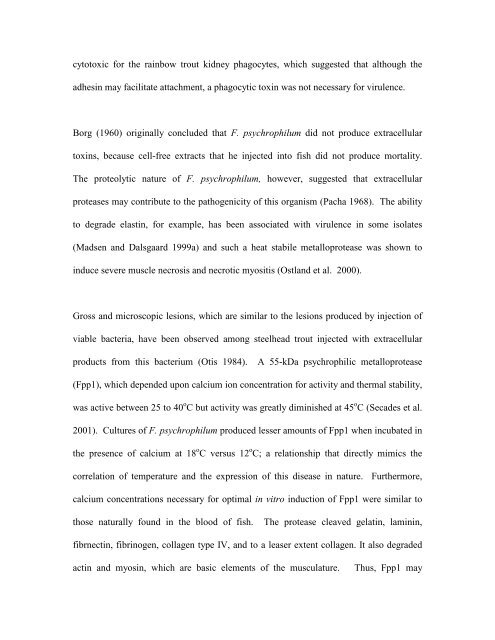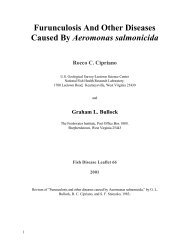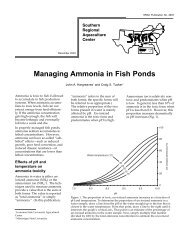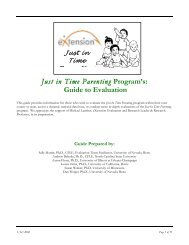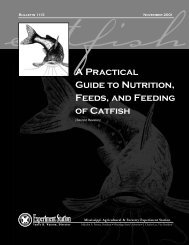Flavobacterium psychrophilum, cause of ... - cop.eXtension.org
Flavobacterium psychrophilum, cause of ... - cop.eXtension.org
Flavobacterium psychrophilum, cause of ... - cop.eXtension.org
Create successful ePaper yourself
Turn your PDF publications into a flip-book with our unique Google optimized e-Paper software.
cytotoxic for the rainbow trout kidney phagocytes, which suggested that although the<br />
adhesin may facilitate attachment, a phagocytic toxin was not necessary for virulence.<br />
B<strong>org</strong> (1960) originally concluded that F. <strong>psychrophilum</strong> did not produce extracellular<br />
toxins, be<strong>cause</strong> cell-free extracts that he injected into fish did not produce mortality.<br />
The proteolytic nature <strong>of</strong> F. <strong>psychrophilum</strong>, however, suggested that extracellular<br />
proteases may contribute to the pathogenicity <strong>of</strong> this <strong>org</strong>anism (Pacha 1968). The ability<br />
to degrade elastin, for example, has been associated with virulence in some isolates<br />
(Madsen and Dalsgaard 1999a) and such a heat stabile metalloprotease was shown to<br />
induce severe muscle necrosis and necrotic myositis (Ostland et al. 2000).<br />
Gross and micros<strong>cop</strong>ic lesions, which are similar to the lesions produced by injection <strong>of</strong><br />
viable bacteria, have been observed among steelhead trout injected with extracellular<br />
products from this bacterium (Otis 1984). A 55-kDa psychrophilic metalloprotease<br />
(Fpp1), which depended upon calcium ion concentration for activity and thermal stability,<br />
was active between 25 to 40 o C but activity was greatly diminished at 45 o C (Secades et al.<br />
2001). Cultures <strong>of</strong> F. <strong>psychrophilum</strong> produced lesser amounts <strong>of</strong> Fpp1 when incubated in<br />
the presence <strong>of</strong> calcium at 18 o C versus 12 o C; a relationship that directly mimics the<br />
correlation <strong>of</strong> temperature and the expression <strong>of</strong> this disease in nature. Furthermore,<br />
calcium concentrations necessary for optimal in vitro induction <strong>of</strong> Fpp1 were similar to<br />
those naturally found in the blood <strong>of</strong> fish. The protease cleaved gelatin, laminin,<br />
fibrnectin, fibrinogen, collagen type IV, and to a leaser extent collagen. It also degraded<br />
actin and myosin, which are basic elements <strong>of</strong> the musculature. Thus, Fpp1 may


